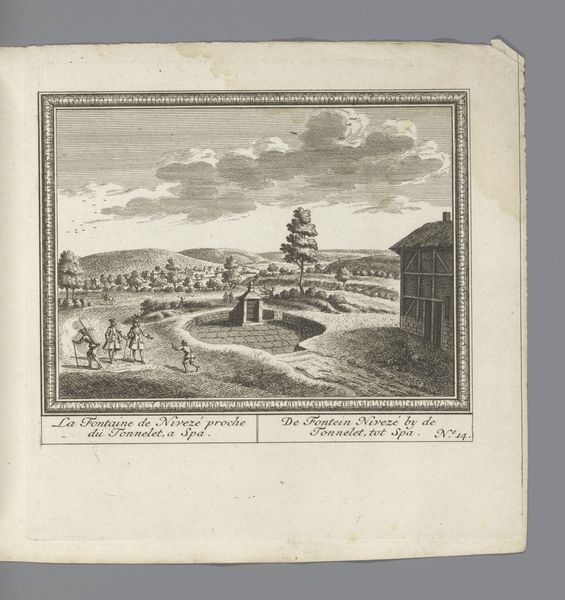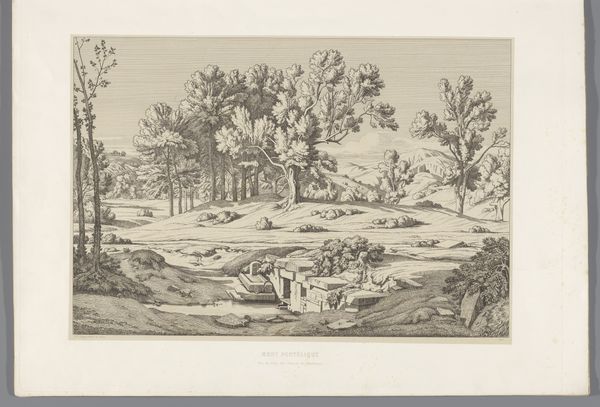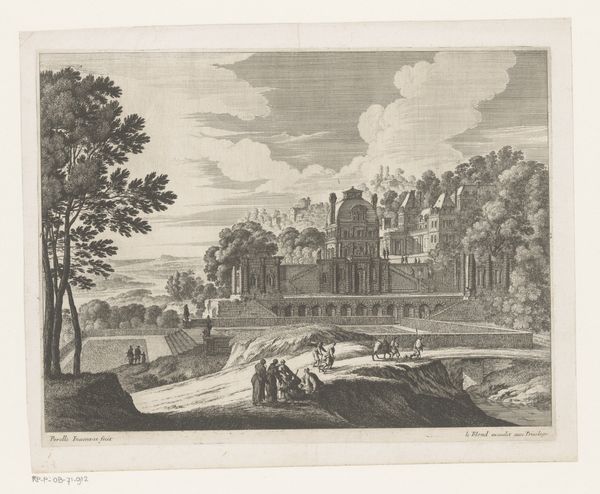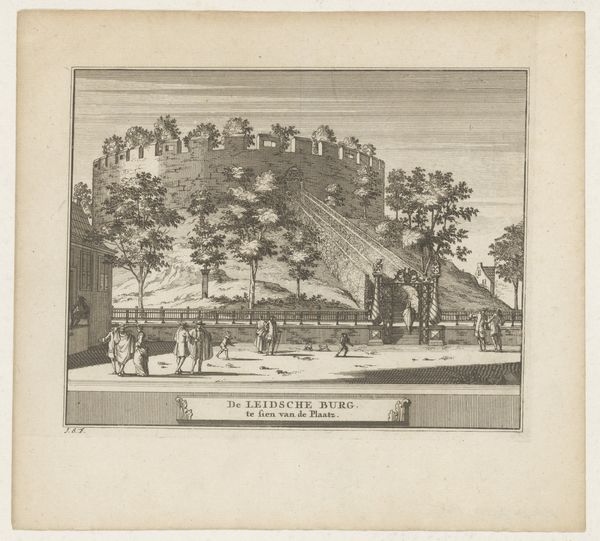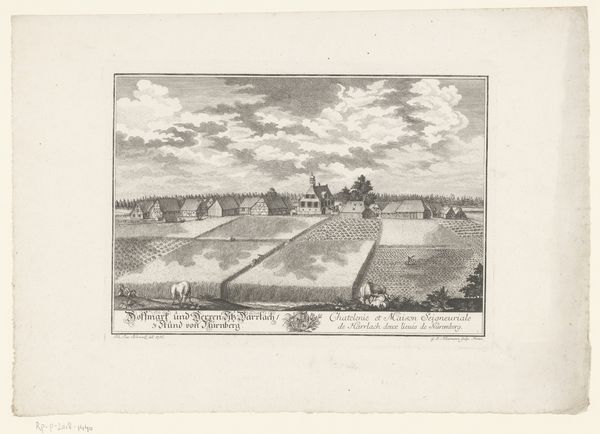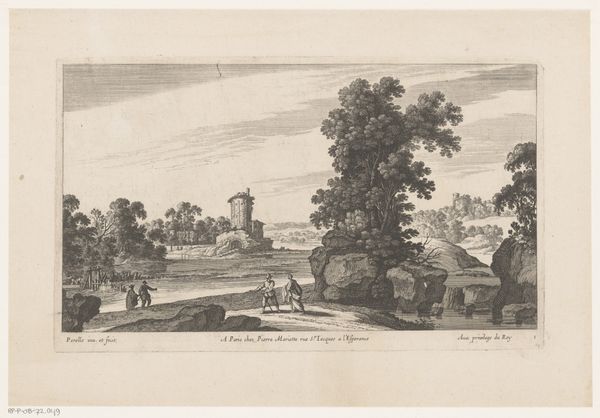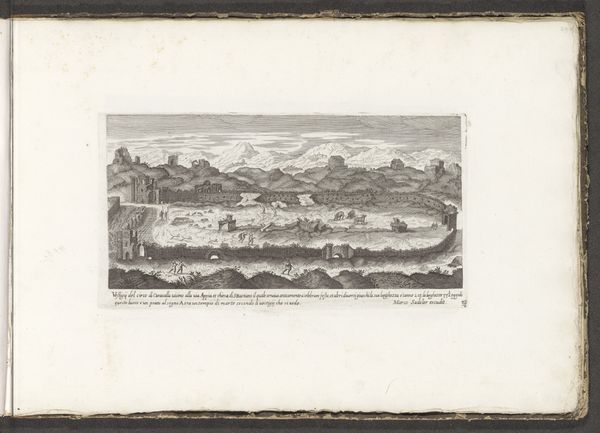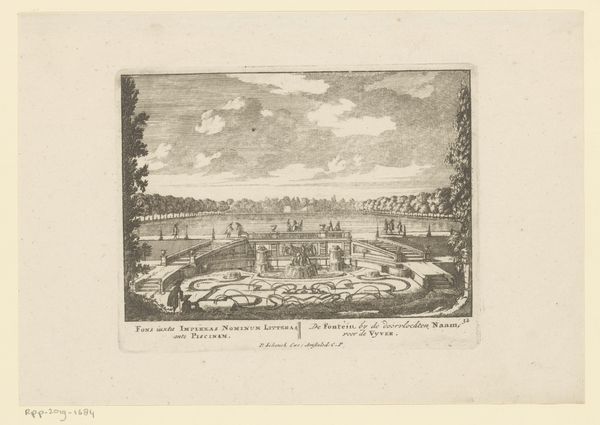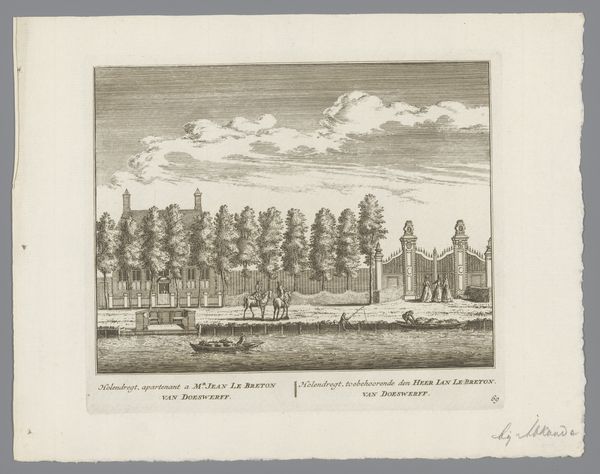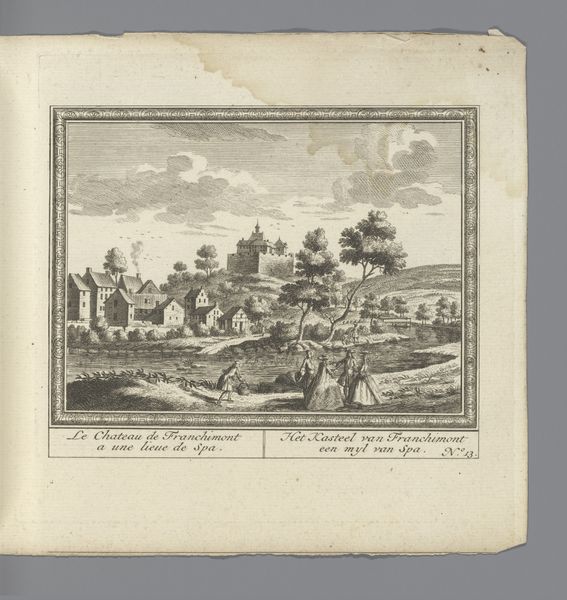
drawing, print, etching, paper, ink, engraving
#
drawing
#
baroque
#
pen drawing
# print
#
etching
#
landscape
#
paper
#
ink
#
cityscape
#
engraving
Dimensions: height 231 mm, width 430 mm
Copyright: Rijks Museum: Open Domain
Editor: So, here we have "Gezicht op de Vaticaanse Belvedere tuinen," a print, etching and engraving made with ink on paper, dating back to before 1683, by Giovanni Battista Falda, currently housed in the Rijksmuseum. I am struck by the contrast of geometric garden design versus organic elements such as trees, giving the place an orderly but still natural feel. What can you tell me about it? Curator: Well, looking at the materials themselves – the ink, the paper, the etched lines – we need to consider the means of production. This print wasn't just about depicting a garden; it was about creating multiples, making the image accessible to a wider audience beyond those who could visit the Vatican. It democratized the view. What do you make of that accessibility? Editor: It’s interesting, I hadn’t thought about it that way. So, the production process influences its meaning. Almost like it’s the precursor of postcards? Curator: Exactly. The act of etching, a repeatable process, transforms a unique garden into a commodity, consumed visually, but also traded and sold. Consider the labor involved, too. Not just Falda's artistic labor, but the work required to produce the paper, the ink, and the prints themselves. How does this layer of information change how you view it? Editor: It’s making me think about the networks and industries propping up artmaking. The view is now infused with ideas of class and value. Curator: Precisely. And the print's purpose? Was it purely aesthetic, or was it about projecting power, about showcasing the Vatican's control over even nature itself? The baroque period loved order. Editor: So it becomes an advertisement, really, projecting the Vatican’s soft power through beauty? Curator: Precisely, with the artist's skills and materials like ink, paper and etching, central to creating that "advertisement." Editor: This makes me look at this tranquil garden very differently now, realizing the economic and social context embedded in this seemingly simple artwork. Curator: Indeed. By understanding the materiality and mode of production, we see beyond the pretty picture and understand its function.
Comments
No comments
Be the first to comment and join the conversation on the ultimate creative platform.
